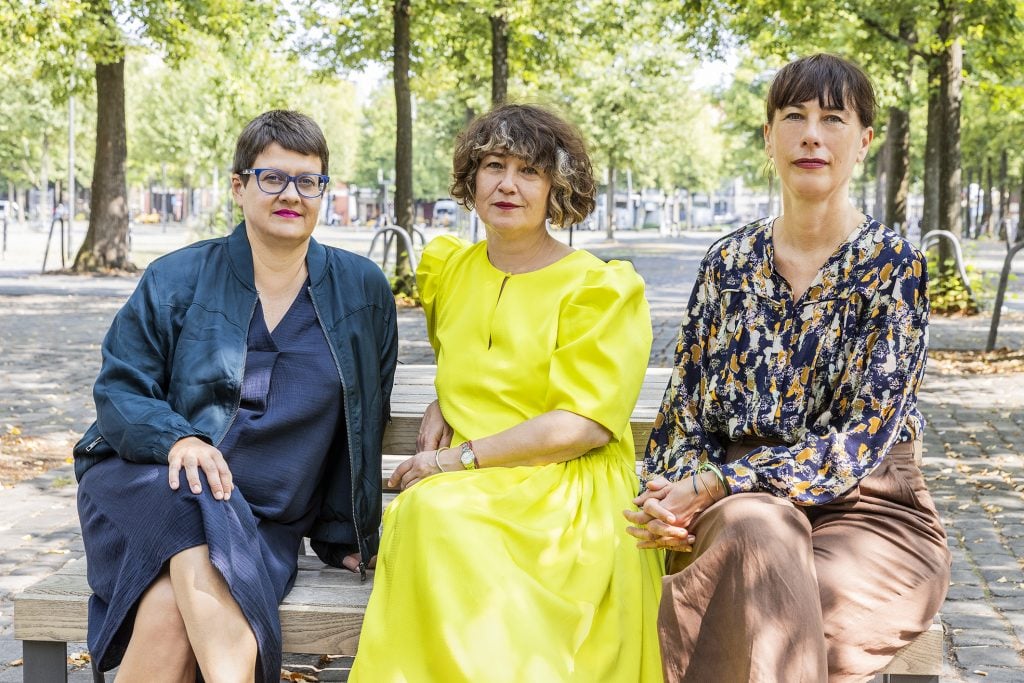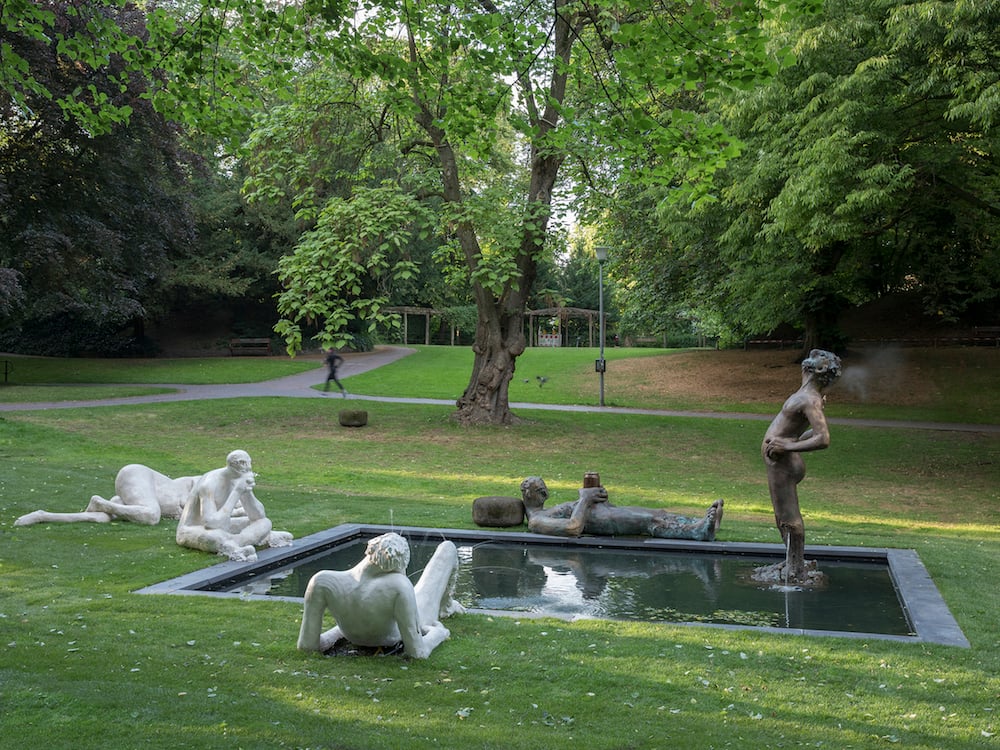Art World
Three Women Announced As the New Artistic Directors of Prestigious Skulptur Projekte Münster
The curatorial collective What, How & for Whom said their vision aligns with that of co-founder Kaspar König, who died earlier this month.

The curatorial collective What, How & for Whom said their vision aligns with that of co-founder Kaspar König, who died earlier this month.

Jo Lawson-Tancred

Skulptur Projekte Münster has announced the curatorial collective What, How & for Whom (WHW) as artistic directors for its sixth edition in 2027, which marks its 50th anniversary. The decennial event in the western German city of Münster is one of the most important international exhibitions of contemporary art.
The three members of WHW—Ivet Ćurlin, Nataša Ilić, and Sabina Sabolović—co-founded the collective in Zagreb, Croatia in 1999 and are currently based between Zagreb and Berlin. Their appointment will make 2027 the first woman-led edition in the event’s history.
Skulptur Projekte was launched in 1977 by the late German curators Dr. Klaus Bußmann and Kasper König, with the aim of exploring our encounters with art in the public realm as well as addressing the social issues of the day. This is the first edition in which neither founder is involved.
Presenting their initial ideas for 2027 at a press conference on Wednesday morning, WHH said they were inspired by the notion of a “transnational public space,” defined by philosopher Nancy Fraser as the idea that “the public sphere no longer functions within national borders and that different counter publics cannot simply share a single site of critical public discourse.”
This means that, rather than “bring everyone together around uncontested artworks,” the collective aims to “collaborate with and appeal to different counter publics or social groups.” Further, the collective promised “a dose of provocation where necessary.”
To this end, WHW addressed the highly fraught cultural context in Germany since October 7, which has seen a slew of censorship scandals, cancellations, protests, and, last fall, the resignation of Documenta’s entire curatorial committee.

Nicole Eisenman, Sketch for a Fountain ©Skulptur Projekte 2017. Photo: Henning Rogge.
Noting their own identities as former citizens of Yugoslavia, the collective said they had “a close relationship to war and genocide” and are inspired by the resistance of the anti-fascist Yugoslav Partisans to achieve “uncontested rights for all.”
“In an atmosphere of fear and self-censorship caused by political guidelines, German institutions have disinvited or not invited artists, theorists, musicians, filmmakers, who they believe might be guilty of holding unacceptable opinions,” they said in a statement. They described this as “an unprecedented attack on culture and cultural autonomy” that affects Jewish artists, Palestinian artists, Muslim artists, and those expressing solidarity with their colleagues.
“We refuse to retreat into silence when we see these things occurring, and will therefore work in Münster to provide a space where all voices can be heard,” WHW promised, so long as these voices could not be classed as hate speech.
Elaborating on their initial curatorial approach, WHW intend to spend the next year “listening and learning” about Münster, where they will live some of the time. Rather than aiming for “reinvention,” this research will be driven by a desire to honor the Skulptur Projekte’s history by posing questions like “what memories of artists, incidents, and activities survive in the collective consciousness of Münster?” Some past projects may be restaged “with a different agency.”
WHW said their vision aligns with that of König, who died earlier this month. Shortly after their appointment, they had a final conversation with the curator and agreed that the event’s principal aim should be “the fact that the artists are given the chance to do ambitious and meaningful projects.” The pledged to do their “best to maintain his passion for artistic imagination.”
The first edition of Skulptur Projekte in 1977 set the tone for an emphasis on experimental, highly original practices by featuring artists like Donald Judd, Richard Long, Claes Oldenburg, and Richard Serra. Participants in the more recent 2017 edition included Nicole Eisenman, Mika Rottenberg, and Nairy Baghramian. Check out Artnet New’s guide to learn more about the event.